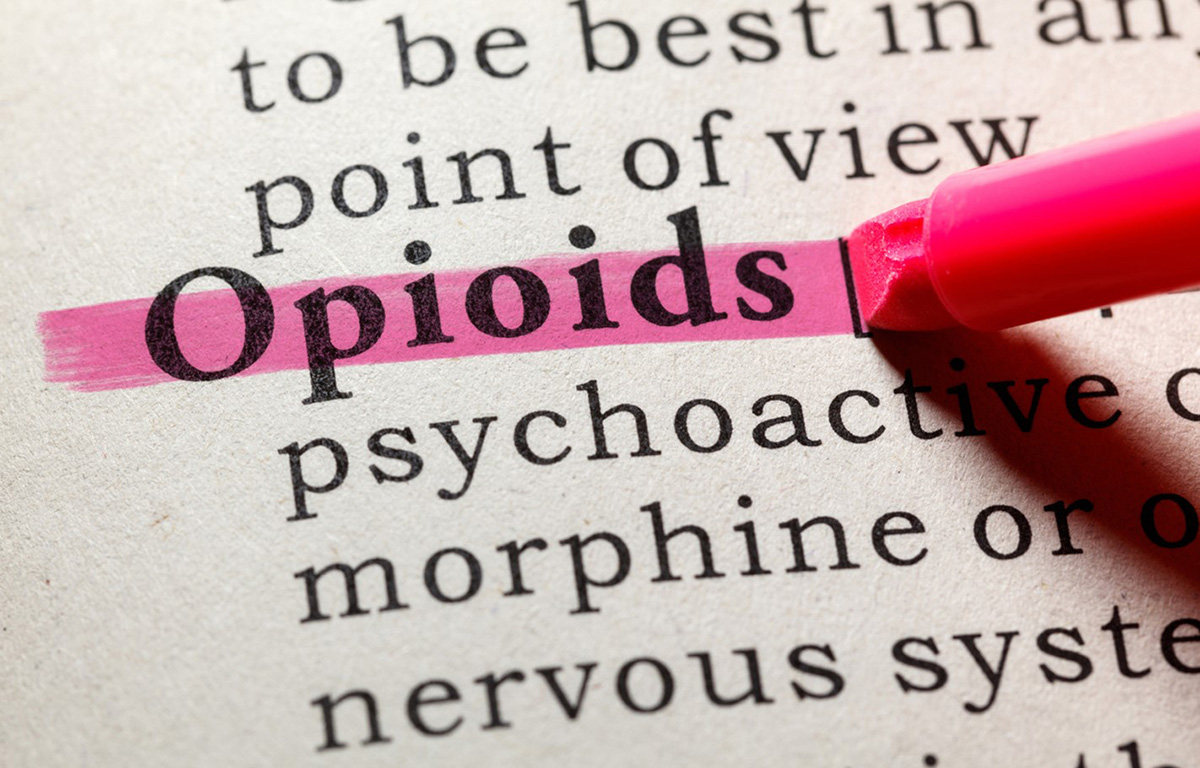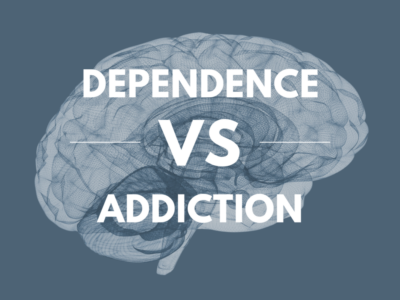Opioids
Opioids, sometimes called narcotics, are a class of drugs that include legal prescription medications, the illegal drug heroin, and synthetic substances such as fentanyl. Opioids are commonly prescribed by medical providers to reduce pain, including pain associated with cancer or following a surgery (i.e., severe acute pain). Opioids can negatively affect the reward center in the brain, leading users to need more and more over time. As a result, these drugs can be highly addictive.

Three Main Types of OPIOIDS
NATURAL
Natural opioids are derived directly from the opium poppy plant. Natural opiates include morphine, codeine and thebaine.
SEMI-SYNTHETIC
Semi-synthetic (man-made) opioids are created in labs from natural opiates. Semi-synthetic opioids include hydromorphone (Dilaudid® and Exalgo®), hydrocodone (Vicodin®), oxycodone (OxyContin® and Percocet®), oxymorphone (Opana®), and heroin, which is made from morphine.
SYNTHETIC
Synthetic opioids are produced entirely by people in a lab. Examples of synthetic opioids include fentanyl, carfentanil, methadone, tramadol and more.
How do opioids impact the brain?
“Opioid use disorder causes measurable changes in the brain. It’s a real thing that you can see,” says Dr. Caleb Banta-Green, principal research scientist with the University of Washington’s Alcohol and Drug Abuse Institute. “It’s a biological condition that’s driving behavior. While it looks like a person making bad choices over and over, it’s really about the brain being hijacked by the drug.”

Opioids attach to proteins, called opioid receptors, on nerve cells in the brain, spinal cord, gut and other parts of the body. By attaching to receptors, opioids block pain signals or “messages” from reaching the brain, which then curbs the feeling of pain. That is why opioid medications are often prescribed for severe acute pain, including pain associated with cancer or surgery. While opioids can effectively relieve pain, they do carry some risks and can be highly addictive.
Along with reducing pain, opioids increase pleasure by releasing dopamine, one of the “feel good chemicals” in the brain. Research has shown that the drugs most used by humans (e.g., opiates, alcohol, nicotine, amphetamines and cocaine) create a neurochemical reaction that significantly increase the amount of dopamine that is released by neurons in the brain’s reward center. This dopamine overflow results in the feeling of being “high.” The body eventually adjusts to the pain-blocking properties and abundance of dopamine, which means a larger dose is needed to get the same level of pain control or high. Your brain becomes hard-wired to seek opioids to maintain its new normal, which is labeled as dependence.
What is the Difference Between Dependence and Addiction?
Dependence is not the same as addiction.
Dependence
Dependence occurs when the brain adapts to the effects of a drug and develops tolerance. In other words, an individual will require a higher dose of the drug to feel “normal.” If the drug were to be stopped, the body would begin to go through withdrawal. Opioids, even when used as directed by a doctor, can cause dependence. Luckily, dependence can be easily managed and resolved. Talk to you doctor about slowly lowering the dose of, or “tapering,” your medication.

Addiction
Nearly 1 in 3 People Knows Someone Who Struggles With Opioid Addiction.
Thousands of Skagitonians from all walks of life struggle with substance use and addiction. Addiction is a disease that does not discriminate—it affects people of all ages, races/ethnicities and socio-economic backgrounds. Substance use disorders, including opioid use disorder, are chronic medical conditions and need to be treated as such.
Misuse of opioids can lead to addiction, a disease that interferes with normal functioning. A person who has an addiction is physically unable to stop taking the drug, even when that drug is causing negative consequences. “Addiction affects the parts of the brain responsible for decision-making and self-control, so a person suffering from addiction will continue to use the drug despite serious life consequences, such as losing a job, getting arrested, or suffering an overdose.” Opioid addiction is not a moral failing, but a chronic disease. Finding the right treatment options and services are crucial.
A similarity to heart conditions, cancers, and other chronic diseases is the random nature of how addiction can happen. Some individuals may have had adverse experiences in childhood or adulthood that caused emotional and/or physical trauma, resulting in an increased risk for developing a substance use disorder. Others may be born genetically geared to like or feel “normal” when taking opioids. The tricky part is you will not know if you fall into the latter category until you try an opioid for the first time.
Learn more about specific opioid (e.g., OxyContin®, heroin, etc.) and other substance addictions:
Symptoms of Addiction
Moodiness, irritability, anger, aggressive behavior
Depression, poor personal hygiene
Incoherence, forgetfulness, slurred speech
Significant changes in weight
Clumsiness, poor balance, lack of coordination
Rapid speech, uncharacteristic talkativeness, restlessness
Irresponsibility, recklessness, bad judgment, secrecy
Thefts or sudden requests for money
Change in social interactions, new friends replace old friends, fights with family members and friends, not participating in family functions
Problems at work/school, such as decreased effort, discipline issues, poor grades or unexplained absences
Prescription Misuse and Abuse
Misusing and abusing opioid prescriptions can lead to an addiction and increases the risk of overdose.
Improperly using your own prescription is called “prescription misuse,” and when that prescription is for opioids, this practice can be very dangerous. Examples of prescription misuse include:
- Taking a higher dose of medication than prescribed
- Taking medication more frequently than prescribed
- Taking medication for longer than prescribed
- Taking medication for non-medical purposes
Examples of prescription abuse include:
- Taking pills that are not prescribed to you
- Seeking prescriptions when no physical condition warrants

“Opioid pain medication for acute pain should be taken at the lowest dose possible and for the shortest time possible to make the pain manageable. A patient who tries to take sufficient medicine to get rid of the pain completely or continues the medication until the pain is gone completely puts themselves at risk for prolonged opioid use disorder.”
––Dr. Howard Leibrand, Health Officer for Skagit County and addiction medicine physician with Ideal Option
What is a Stimulant?
Stimulants are a group of drugs that cause the brain to release chemicals (e.g., dopamine, norepinephrine, and serotonin) that speed up heart rate, boost energy, and produce strong feelings of pleasure and excitement. Sometimes referred to as “uppers,” stimulants include cocaine, methamphetamine, MDMA (“ecstasy”) and some prescription medications such as Adderall and Ritalin. Both legal and illicit stimulants are commonly misused.
Individuals who misuse stimulants – take large doses and/or for a long time – can experience serious mental health and physical problems. It is extremely important to note that people CAN overdose on stimulants. Signs of stimulant intoxication/overdose are listed below:
Psychological
- Restlessness
- Confusion
- Anxiety
- Paranoia
- Aggression or agitation
- Psychosis which may include hallucinations
Physical
- Nausea, vomiting, diarrhea, and abdominal cramps
- Pupillary dilation
- Tremors, convulsions, and overactive reflexes
- Tachycardia (rapid breathing)
- High body temperature, fever and heat stroke
- Chest pain, irregular heartbeat, and heart attack
- Abnormally high or low blood pressure and circulation failure
- Coma
- Death

At high doses, stimulants can lead to dangerously high body temperature, heat stroke, an irregular heartbeat, heart failure, seizures, stroke, and death. If you think someone is overdosing, call 911. Unlike opioids, there is no reversal medication that can be administered. This means that immediate medical attention is crucial. First responders and emergency room doctors try to treat stimulant overdose by restoring blood flow to the heart and/or stopping seizures.
Stimulants Are Not All The Same
Cocaine – an illegal drug made from the coca plant that’s often snorted or smoked. Cocaine comes in three different forms including cocaine hydrocholoride, freebase, and crack. Learn more about cocaine here.
Methamphetamine – an illegal and highly addictive amphetamine drug. Meth affects the central nervous system, is more potent than other stimulants, and has longer lasting effects. Deaths involving methamphetamine have increased by 600% in the last ten years in Washington State. Learn more about Meth Overdose (called “overamping”) here.
MDMA, commonly known as ecstasy or Molly – an illegal, manmade drug that has stimulant and hallucinogenic properties. Learn more about MDMA here.
Prescription Stimulants – includes medications such as amphetamine and dextroamphetamine (Adderall and Dexedrine), and methylphenidate (Ritalin, Concerta). All forms of amphetamines were classified as DEA Schedule II drugs (Schedule II drugs have an accepted medical use and high potential for abuse). These medications are used to treat attention deficit hyperactivity disorder (ADHD), narcolepsy and obesity. Learn more about prescription stimulants here.
There are several treatment approaches that can help people quit or cut back on their stimulant use.

